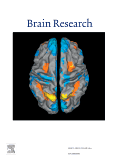
“Fibrosis in ventricular system has a role in hydrocephalus following intraventricular hemorrhage (IVH).
The cannabinoid receptor 2 (CB2) has been reported to participate in alleviating the fibrosis process of many diseases.
However, its role in fibrosis after IVH was unclear so far, and we hypothesized that CB2 activation has potential to attenuate hydrocephalus after IVH via restricting fibrosis. So the present study was designed to investigate this hypothesis in a modified rat IVH model.
In conclusion, CB2 may have anti-fibrogenic effects after IVH. CB2 agonist suppressed fibrosis of ventricular system and alleviated hydrocephalus following IVH, which is partly mediated by inhibiting TGF-β1.”

